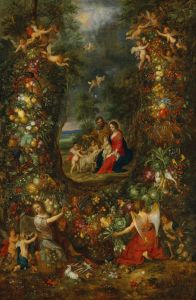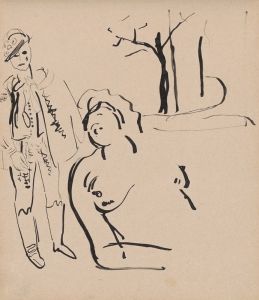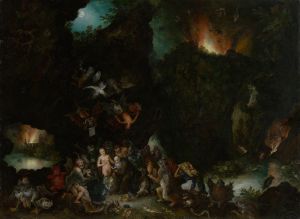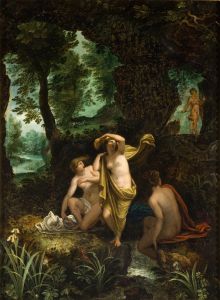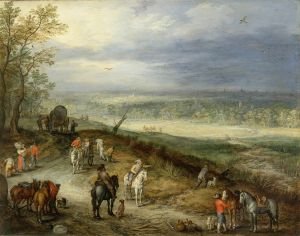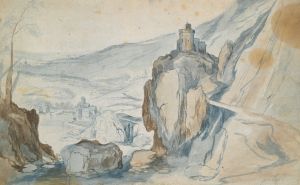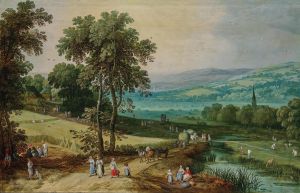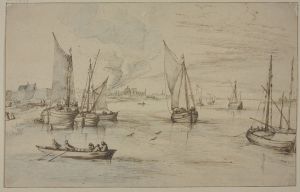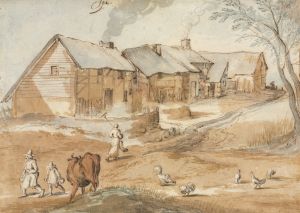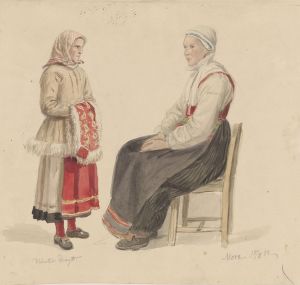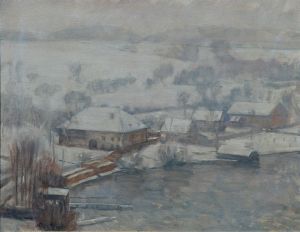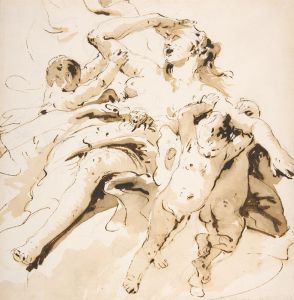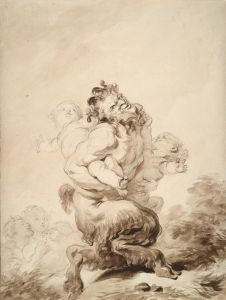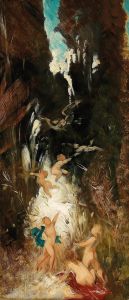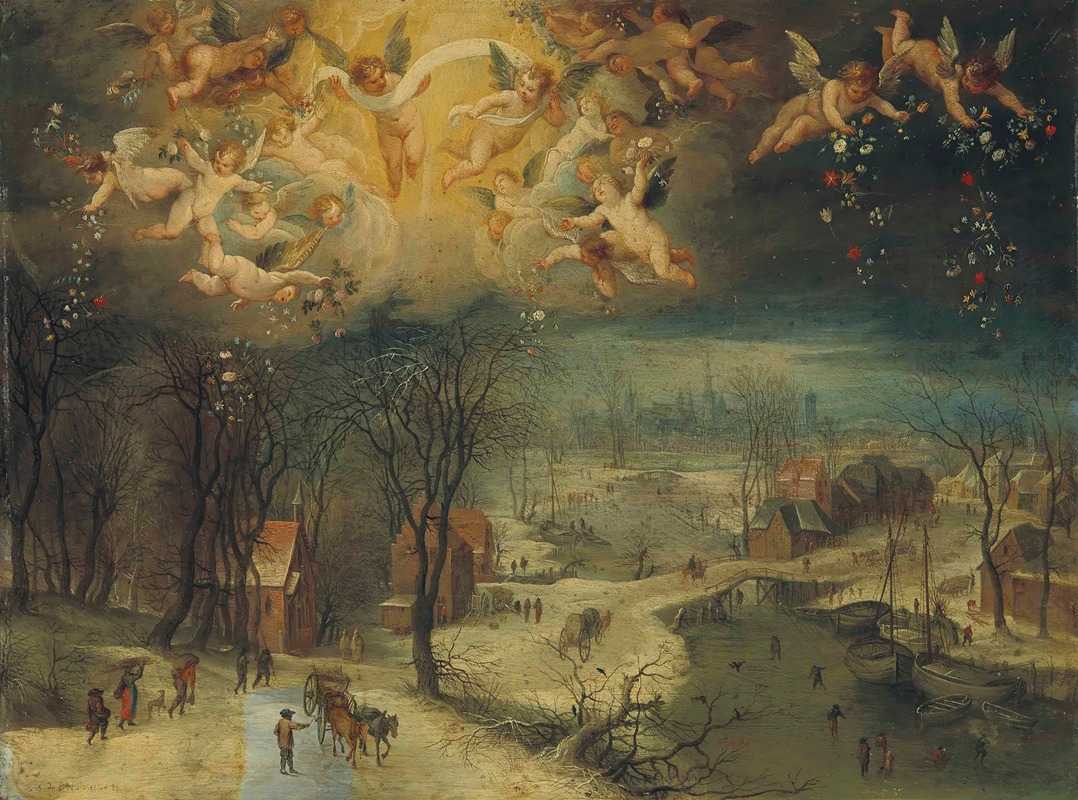
A winter landscape with villagers gathering wood and skaters on a frozen river, putti scattering flowers above
A hand-painted replica of Jan Brueghel The Elder’s masterpiece A winter landscape with villagers gathering wood and skaters on a frozen river, putti scattering flowers above, meticulously crafted by professional artists to capture the true essence of the original. Each piece is created with museum-quality canvas and rare mineral pigments, carefully painted by experienced artists with delicate brushstrokes and rich, layered colors to perfectly recreate the texture of the original artwork. Unlike machine-printed reproductions, this hand-painted version brings the painting to life, infused with the artist’s emotions and skill in every stroke. Whether for personal collection or home decoration, it instantly elevates the artistic atmosphere of any space.
"A Winter Landscape with Villagers Gathering Wood and Skaters on a Frozen River, Putti Scattering Flowers Above" is a painting by Jan Brueghel the Elder, a prominent Flemish painter known for his detailed landscapes and vibrant depictions of nature. Jan Brueghel the Elder was born in 1568 in Brussels and was the son of the famous painter Pieter Bruegel the Elder. He is often referred to as "Velvet Brueghel" due to his delicate and finely detailed brushwork.
This particular painting is a fine example of Brueghel's ability to combine landscape with genre scenes, capturing the essence of rural life during the winter season. The painting depicts a bustling winter scene where villagers are engaged in various activities. In the foreground, villagers are seen gathering wood, an essential task for heating and cooking during the cold months. The frozen river in the middle ground is populated with skaters, showcasing a popular winter pastime of the period.
One of the unique features of this painting is the inclusion of putti, or cherubic figures, scattering flowers from above. This element adds a whimsical and somewhat fantastical touch to the otherwise realistic winter landscape. The putti are often associated with themes of love and beauty, and their presence in this painting may symbolize the joy and festivity of the winter season despite the cold.
Jan Brueghel the Elder was known for his meticulous attention to detail, and this painting is no exception. The intricate depiction of the trees, the texture of the snow, and the lively expressions of the villagers all contribute to the overall vibrancy and realism of the scene. The use of color is also noteworthy, with the cool tones of the snow and ice contrasting beautifully with the warmer hues of the villagers' clothing and the flowers scattered by the putti.
Brueghel's work often reflects the influence of his father, Pieter Bruegel the Elder, who was also known for his detailed landscapes and depictions of peasant life. However, Jan Brueghel the Elder developed his own distinct style, characterized by a greater emphasis on naturalism and a more refined technique.
This painting is an excellent representation of Jan Brueghel the Elder's skill in combining detailed landscape painting with lively genre scenes. It captures the essence of winter in a rural Flemish village, highlighting both the hardships and the joys of the season. The inclusion of the putti adds an element of fantasy, making the painting not only a realistic depiction of winter life but also a celebration of the beauty and wonder of the natural world.
Jan Brueghel the Elder's works are highly regarded and can be found in major art collections and museums around the world. His contributions to landscape painting and his ability to capture the intricacies of nature have earned him a lasting legacy in the history of art.





